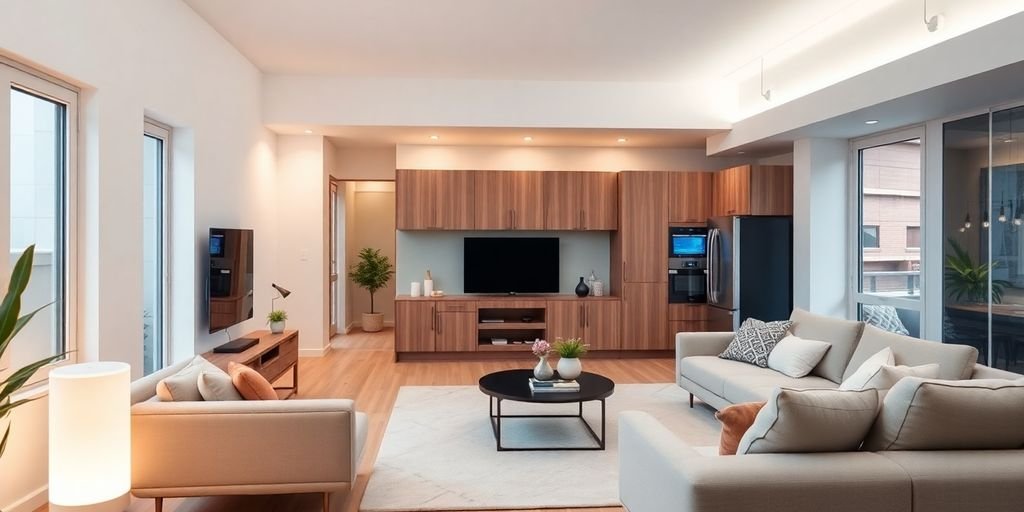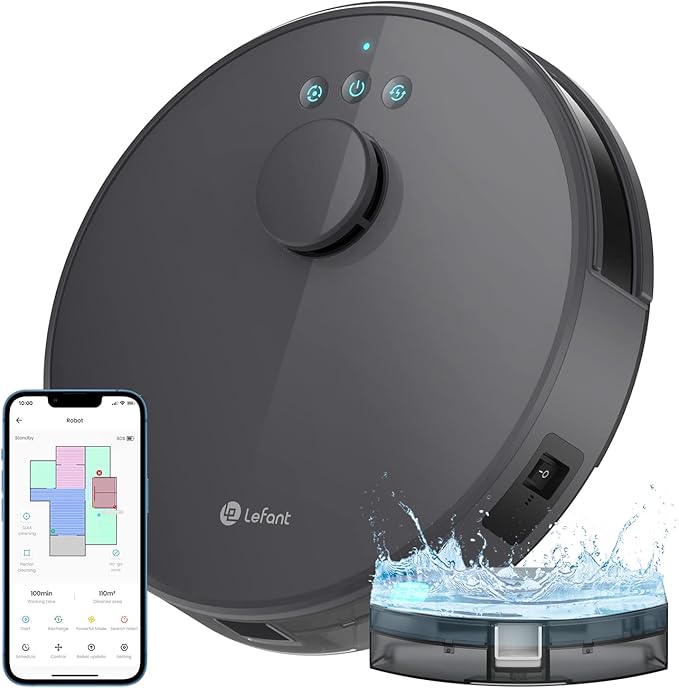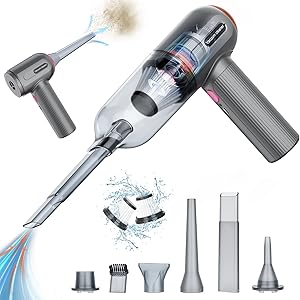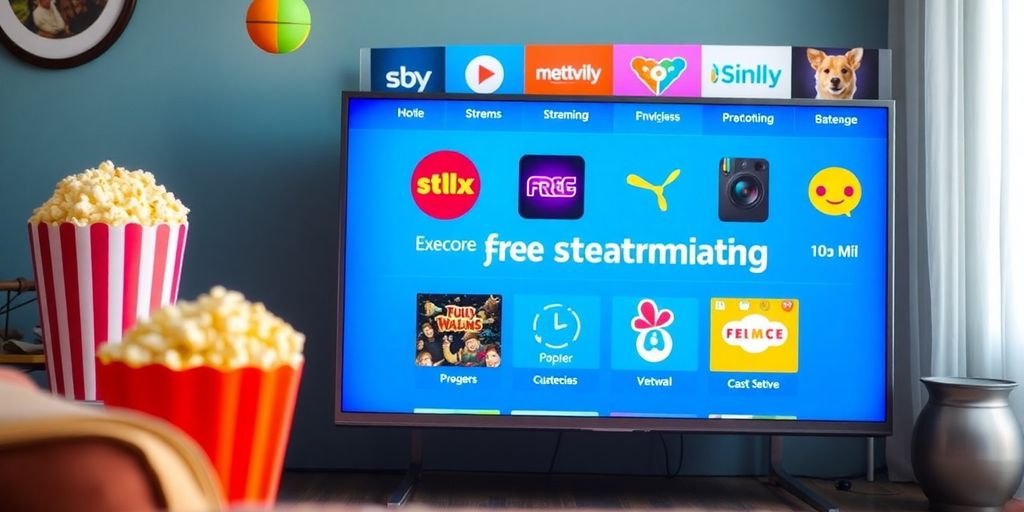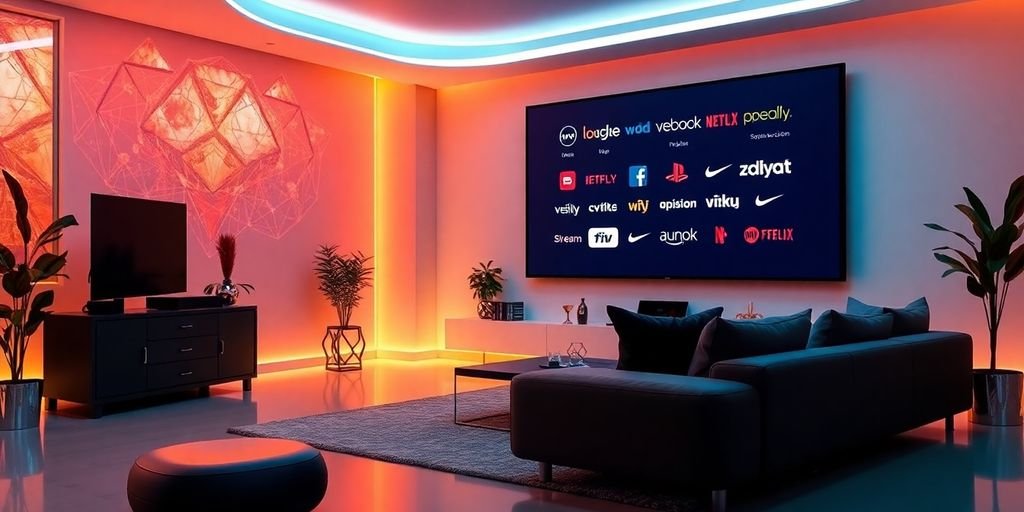The connected home landscape has seen incredible changes over the last few years. What was once a collection of gadgets is now a vital part of how we live. As we inch closer to 2025, it’s important to grasp the market trends that are shaping this space. In this article, we will look at the current state of the connected home market, explore new tech developments, and consider the economic factors that are influencing these trends. Let’s dig into what the future holds for our homes.
Key Takeaways
- The connected home market is projected to be worth $174 billion by 2025, driven by AI and IoT advancements.
- Consumer interest in smart home devices is growing, with a significant percentage of households adopting these technologies.
- Sustainability is becoming a key focus, with energy-efficient devices and renewable energy sources on the rise.
- Health and wellness features are increasingly integrated into smart homes, with systems for monitoring air quality and sleep patterns.
- Data privacy and security remain major concerns, alongside interoperability and the need for consumer education.
Current Market Trends
Overview of Current Industry Trends
The connected home market is really taking off. We’re seeing more and more people adopt smart devices, and it’s not just early adopters anymore. A big part of this growth is down to improvements in AI and the Internet of Things, making these devices more useful and easier to use.
- More devices in homes than ever before.
- AI and IoT working together to make things smarter.
- A wider range of devices available, catering to different needs.
It’s interesting to see how quickly things are changing. Just a few years ago, smart homes felt like something out of a sci-fi film, but now they’re becoming pretty normal.
Consumer Behaviour and Adoption Rates
People are definitely warming up to the idea of smart homes. They’re more willing to spend money on these technologies, especially when they see the benefits in terms of convenience, security, and energy saving. But there are still some barriers to adoption. Cost is a big one, and some people are worried about privacy and security. The GCC Smart Home Market is expected to grow significantly.
- Growing willingness to invest in smart home tech.
- Concerns about cost and security remain.
- Demand for user-friendly and reliable devices.
Key Players in the Connected Home Market
There are a few big names dominating the connected home market, but we’re also seeing a lot of smaller companies and start-ups coming up with innovative products. It’s a competitive landscape, and that’s good for consumers because it drives innovation and keeps prices in check. These companies are constantly pushing the boundaries of what’s possible, and that’s what makes this market so exciting. Here’s a quick look at some of the key players:
| Company | Focus Area |
|---|---|
| Tech Giant A | Wide range of smart home devices |
| Security Firm B | Home security systems |
| Energy Company C | Smart thermostats and energy management |
Technological Innovations Driving Change
The connected home is changing fast. It’s not just about having a few gadgets anymore; it’s about how these technologies come together to make our lives easier and more efficient. Let’s have a look at some of the key innovations making this happen.
Advancements in Artificial Intelligence
AI is becoming a central part of the smart home experience. It’s not just about voice control anymore; it’s about learning your habits and preferences to automate tasks. For example, your smart thermostat could learn when you usually wake up and adjust the temperature accordingly, or your lights could dim automatically as the sun sets. This level of personalisation is what’s driving the next wave of smart home adoption. AI algorithms are also getting better at understanding natural language, making voice control more intuitive and less frustrating. This means fewer commands and more seamless interactions with your devices. The smart home market is really taking off because of this.
Integration of Internet of Things
The Internet of Things (IoT) is the backbone of the connected home. It’s the network that allows all your devices to communicate with each other. We’re seeing more and more devices becoming ‘smart’ and connected, from kitchen appliances to garden irrigation systems. This increased connectivity is creating new opportunities for automation and control. Imagine your fridge automatically ordering groceries when you’re running low, or your washing machine starting a cycle based on the weather forecast.
Here are some examples of IoT integration:
- Smart lighting systems that adjust brightness based on ambient light.
- Security systems that integrate with door locks and cameras.
- Energy management systems that optimise energy consumption.
The real power of IoT comes from its ability to collect and analyse data. This data can be used to improve the performance of your devices, identify potential problems, and even predict future needs. It’s all about making your home smarter and more responsive to your needs.
Smart Home Security Enhancements
Security is a major concern for many people considering a connected home. Luckily, there have been significant advancements in smart home security technology. We’re seeing more sophisticated security systems that use AI to detect and prevent intrusions. These systems can distinguish between a family member and a stranger, reducing false alarms. Biometric authentication is also becoming more common, adding an extra layer of security to your home. Here’s a quick look at some key features:
- Facial recognition technology for identifying visitors.
- Smart locks with remote access control.
- Real-time video monitoring with cloud storage.
These enhancements are making smart homes more secure and giving homeowners peace of mind. The integration of AI-driven surveillance is a game changer.
Sustainability in the Connected Home
Energy-Efficient Devices
Smart homes are becoming increasingly focused on energy conservation. This is driven by both environmental concerns and the desire to reduce household bills. Smart thermostats, for example, learn your heating and cooling preferences and adjust automatically, preventing energy waste. Smart lighting systems use LED bulbs and motion sensors to ensure lights are only on when needed. Smart plugs can monitor energy consumption of individual appliances, allowing you to identify and address energy hogs.
Renewable Energy Integration
Integrating renewable energy sources like solar panels with smart home systems is becoming more common. Smart inverters optimise the energy generated by solar panels, and smart home systems can prioritise using this renewable energy over grid electricity. Battery storage solutions, managed by smart home systems, allow homeowners to store excess solar energy for later use, further reducing reliance on the grid. This integration not only lowers carbon footprint but also provides energy independence.
Eco-Friendly Smart Solutions
Beyond energy, smart homes are embracing other eco-friendly solutions. Smart irrigation systems use weather data and soil sensors to optimise water usage in gardens, preventing water waste. Smart waste management systems can track recycling habits and provide feedback to encourage more sustainable practises. Even smart home construction is evolving, with a focus on using sustainable materials and energy-efficient designs.
The shift towards sustainability in connected homes isn’t just a trend; it’s a necessity. As consumers become more aware of their environmental impact, the demand for eco-friendly smart home solutions will only continue to grow. This presents a significant opportunity for manufacturers and developers to innovate and create products that are both smart and sustainable.
Health and Wellness Integration
Smart Health Monitoring Systems
Okay, so health monitoring in the home is getting seriously smart. It’s not just about fitness trackers anymore; your house is becoming a health hub. Imagine smart mattresses tracking your sleep, heart rate, and even respiration. It’s like having a doctor keeping an eye on you 24/7. Smart scales are also getting an upgrade, measuring everything from weight to body fat percentage. For those managing chronic conditions, we’re talking about medication dispensers and blood pressure monitors that can alert you to potential problems. It’s all about being proactive and staying on top of your health without even leaving the house.
Air Quality Management
Air quality is a big deal, especially if you’ve got allergies or respiratory issues. Smart homes are now integrating sensors that monitor the air for pollutants, allergens, and even carbon monoxide. These systems can then automatically adjust the ventilation, air purifiers, and humidifiers to keep the air clean and healthy.
- Real-time monitoring of pollutants
- Automatic adjustment of ventilation systems
- Alerts for dangerous air quality levels
It’s about creating a living environment that actively supports your respiratory health. No more guessing if the air is clean; you’ll know for sure.
Sleep Tracking Technologies
Sleep is super important, and smart homes are stepping up to help us get better rest. We’re not just talking about basic sleep trackers; these systems are getting advanced. Smart beds can adjust their firmness and temperature to optimise your sleep, while sensors monitor your sleep cycles, heart rate, and even snoring. The data is then used to provide personalised recommendations for improving your sleep quality. It’s like having a sleep coach built into your bed. Better sleep equals better health, and these technologies are making it easier than ever to achieve.
User Experience and Interface Design
Intuitive Control Systems
Okay, so, remember trying to programme your parents’ old VCR? That’s the kind of user experience we’re trying to avoid in the connected home. The goal is simplicity. We’re talking interfaces that anyone can pick up and use without needing a degree in computer science. Think big, clear icons, logical layouts, and minimal steps to achieve a task. It’s about making tech fade into the background, not become the main event.
Voice Activation and Smart Assistants
Voice control is getting seriously good. It’s not just about turning on the lights anymore. We’re seeing more nuanced commands, better understanding of context, and even the ability to handle multiple requests at once. Smart assistants are becoming more proactive, learning your routines and anticipating your needs. Imagine your house automatically adjusting the temperature and playing your favourite music as you walk in the door after work. That’s the dream, right?
Personalisation Features
One size fits all? Nah, that’s old news. The connected home of 2025 is all about personalisation. It’s about tailoring the experience to each individual user. This means:
- Customisable dashboards that show you the information you care about most.
- Profiles that remember your preferences for lighting, temperature, and entertainment.
- Adaptive systems that learn from your behaviour and adjust accordingly.
The idea is that your home should feel like an extension of yourself, not just a collection of gadgets. It should understand your habits, anticipate your needs, and make your life easier without you even having to think about it.
Here’s a quick look at how personalisation might affect energy usage:
| User Profile | Typical Energy Usage | Personalised Settings | Energy Savings (%) |
|---|---|---|---|
| Single | 100 kWh/month | Occupancy-based heating | 15% |
| Family | 250 kWh/month | Zoned heating/cooling | 20% |
| Elderly | 150 kWh/month | Smart lighting control | 10% |
Challenges Facing the Connected Home

Data Privacy and Security Concerns
Okay, so things are getting smarter at home, which is great, but it also means more data floating around. And that data? It’s vulnerable. We’re talking about everything from your viewing habits to your sleep schedule being up for grabs. The big worry is how secure all this information really is. Are companies doing enough to protect it? Are we even aware of the risks we’re taking when we connect everything to the internet? It’s a minefield, really.
Interoperability Issues
Ever tried getting different smart home devices to talk to each other? It can be a nightmare. You’ve got one gadget that only works with Apple, another that’s all-in on Google, and a third that seems to speak its own language entirely. It’s like a tech Tower of Babel. The promise of a truly connected home falls flat when your smart home standard can’t even agree on how to say hello. It’s frustrating, expensive, and frankly, a bit ridiculous. We need universal standards, and we need them now.
Consumer Education and Awareness
Let’s be honest, most people haven’t got a clue about the ins and outs of smart home technology. They see the ads, they hear the buzzwords, but they don’t really understand what they’re buying into. Are they aware of the security risks? Do they know how to properly configure their devices? Probably not. There’s a real need for better consumer education. Companies need to be more transparent about the potential pitfalls, and consumers need to take the time to learn about the technology they’re bringing into their homes. Otherwise, we’re just setting ourselves up for trouble.
It’s not enough to just sell the dream of the connected home. We need to equip consumers with the knowledge and tools they need to navigate this new landscape safely and effectively. Otherwise, the smart home revolution could quickly turn into a smart home disaster.
Future Outlook for the Connected Home

Predictions for Market Growth
Okay, so where’s the connected home heading? Well, upwards, mostly! The market is predicted to keep expanding, driven by more affordable tech and a greater understanding of the benefits. We’re not just talking about fancy gadgets anymore; it’s about making life easier and more efficient. Expect to see a lot more integration and automation as the tech gets better. The smart home market is expected to continue its upward trajectory.
Emerging Trends to Watch
Loads of cool stuff is on the horizon. Here’s a few things I’m keeping an eye on:
- Hyper-Personalisation: Homes that learn your habits and adjust automatically. Think lighting, temperature, and even entertainment tailored to your mood.
- Edge Computing: More processing happening locally, meaning faster response times and less reliance on the cloud.
- Advanced Security: Biometric locks, AI-powered surveillance, and systems that can detect anomalies in real-time.
The future of the connected home isn’t just about having more gadgets; it’s about creating a truly intelligent and responsive living environment. It’s about tech that anticipates your needs and adapts to your lifestyle, making your home a seamless extension of yourself.
Opportunities for Stakeholders
So, how can businesses get involved? There are plenty of opportunities. Developing interoperable products is key – nobody wants a home full of devices that don’t talk to each other. Focus on user-friendly design and robust security. And don’t forget about sustainability; eco-friendly smart solutions are going to be a big selling point. Basically, if you can make life easier, safer, and greener, you’re onto a winner.
Final Thoughts
As we look towards 2025, the landscape of connected homes is set to change dramatically. With new technologies emerging and consumer expectations evolving, our homes will become smarter and more efficient than ever. The integration of AI and IoT will not just enhance convenience but also promote sustainability, making our living spaces more eco-friendly. It’s clear that the future holds exciting possibilities for smart home innovations. As we embrace these advancements, staying informed and adaptable will be key to making the most of what’s to come. So, whether you’re a tech enthusiast or just curious about smart living, keep an eye on these trends—they’re shaping the homes of tomorrow.
Frequently Asked Questions
What are the main trends in the connected home market for 2025?
The connected home market is seeing trends like more people using smart devices, the rise of artificial intelligence, and a focus on energy efficiency.
How are consumers adopting smart home technology?
Many consumers are eager to try out smart home gadgets, with a growing number of households investing in these technologies.
Who are the key companies in the smart home industry?
Big companies like Apple, Google, and Amazon are leading the way, along with many new startups that are bringing fresh ideas.
What role does sustainability play in smart homes?
Sustainability is important, with many devices being designed to save energy and use renewable resources.
How do smart homes support health and wellness?
Smart homes can help monitor health with devices that check air quality and track sleep patterns.
What challenges do connected homes face?
Some challenges include worries about data privacy, making sure devices work well together, and helping consumers understand how to use these technologies.

